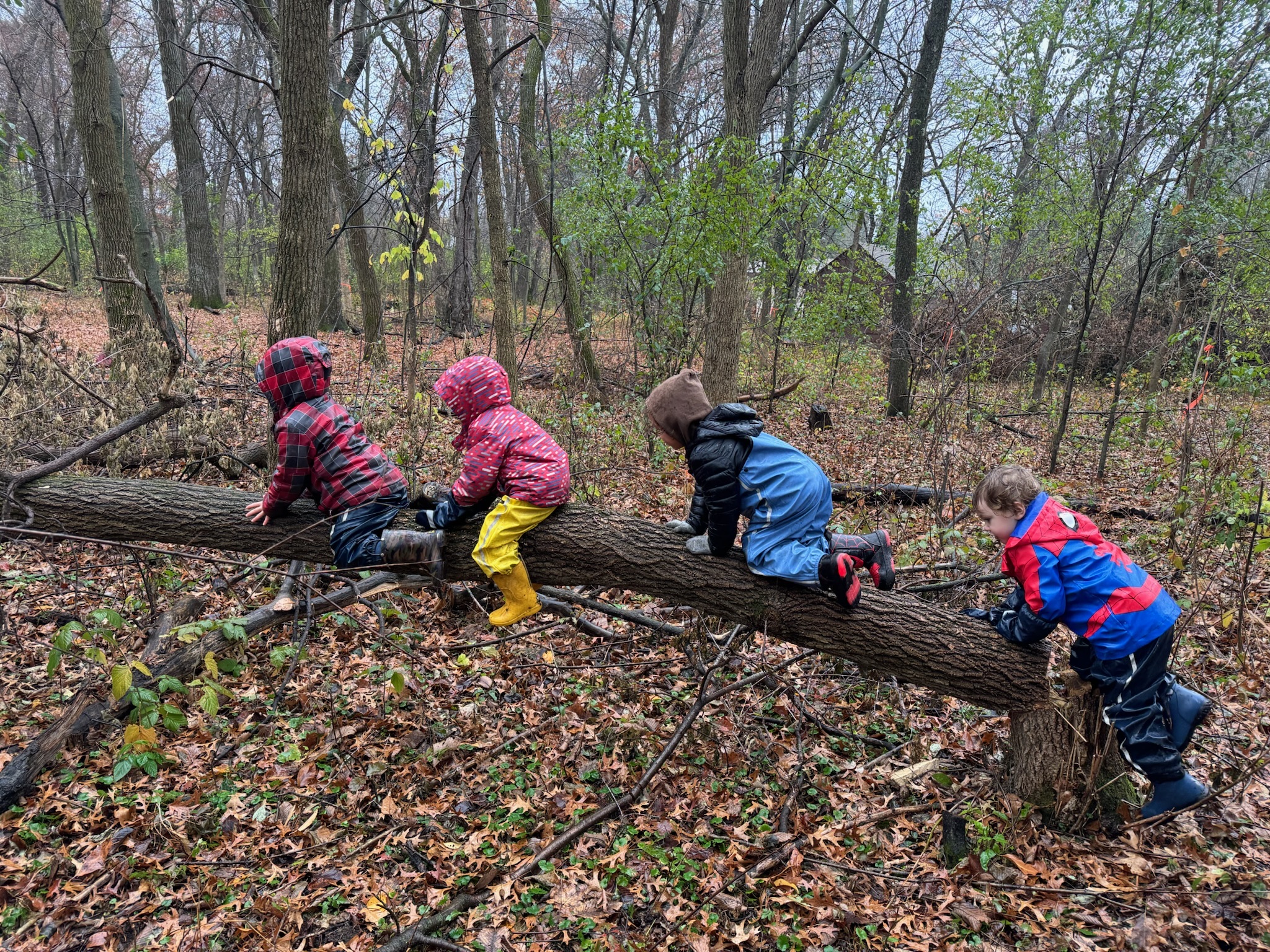From splashing barefoot in muddy puddles to catching snowflakes on tongues, getting kids outside for nature play in all (safe) weather conditions is great for the growth and development of a well-rounded child’s body and mind. With proper gear and preparation, some of the coldest winters or rainiest springs can be the most rewarding outdoor experiences! Here are 10 powerful ways embracing all-weather nature play is essential for a child’s growth and development.
1. Better Sleep
For children, getting adequate sleep starts with engaging in enough physical activity during the day! On top of this, being outdoors during sunrise, daytime, and sunset helps regulate children’s circadian rhythm.

2. Reduces Stress
Being in nature helps reduce stress in children and adults alike. Fresh air, sun exposure, and outdoor movement bring peace and calm to little bodies and minds.

3. Immune System Benefits
Fresh air and sunlight are essential to healthy immune systems. Not to mention that time outside is time away from heightened germ exposure areas like daycares and preschools!

4. Building Confidence and Resilience
Cold and wet weather can be challenging for outdoor play. Finding ways to play and navigate these challenges is great for building these skills.

5. Reducing Screen Time
This one is a given; any time spent outdoors is time spent off screens.

6. Vitamin D for Bone Health
We get vitamin D from sun exposure, which is important for bone health. For growing children, this is especially important.

7. Brain Development
The sensory experiences of outdoor play are key to healthy brain development in infants and toddlers.

8. Physical Development
Getting outside to play allows children the opportunity to move and practice important skills like running, jumping, climbing, and balance.

9. Nature Learning Opportunities
There is so much we can learn about nature just by getting outside and observing our surroundings.

10. Increased Appreciation for Nature
As Maria Montessori says in her book From Childhood to Adolescence, “There is no description, no image in any book that is capable of replacing the sight of real trees, and all the life to be found around them, in a real forest. Something emanates from those trees which speaks to the soul, something no book, no museum is capable of giving.”


